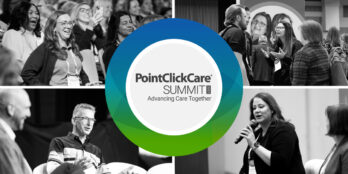
Standing Out From the Competition As Occupancy Declines
 3 min
3 min
Is your senior living community struggling with occupancy? If it is, rest assured — you’re far from alone.
From an occupancy standpoint, senior living communities aren’t necessarily performing very well on the whole. In fact, nationwide, assisted living occupancy just keeps falling.
The average occupancy rate for assisted living properties across the United States dropped to 86.5% in the second quarter of this year, according to data from the National Investment Center for Seniors Housing & Care (NIC). That is approximately 0.7 percentage points lower than the average occupancy rate recorded in the first quarter of this year, and 1.4 percentage points lower than the average occupancy rate recorded during the second quarter of 2016.
Some US cities are getting hit harder than others. Places like San Antonio, Denver, Cleveland, Washington, D.C., and Pittsburgh experienced record or near-record lows in assisted living occupancy during the first quarter of 2017, according to data from NIC.
All the while, new competition seems to be sprouting up in just about every major market. Places like Charlotte, Fort Myers, and Austin are raising alerts for their high levels of construction. So, if you’re operating a senior living community in one of these places, you already know that to keep your occupancy up, your community absolutely needs to stand out from the competition.
There are a number of different approaches that are being implemented by providers, but a number of leading communities are incorporating technology to differentiate themselves. Here’s how:
Juniper Communities
This Bloomington, NJ-based senior living provider first implemented an electronic health record (EHR) in 2012. The decision was difficult at first, but the provider soon realized it “needed to do it to survive”. Soon, Juniper Communities began standing out from the competition as a result.
“Because we were early adopters, and utilized the full spectrum of products, and we committed to it completely, and we’ve been collecting data and using it to drive operations, we’re just in a really different place from most other companies,” Juniper CEO Lynn Katzmann said in a Leadership Series interview.
Five Star Senior Living
This Newton, MA-based senior living provider found itself in a tough position late last year, when competing communities were either going to open or had recently opened within close proximity to half of its communities in NIC-tracked markets, according to McKnight’s Senior Living.
To win over future residents in these increasingly competitive areas, Five Star leveraged technology to implement programs like a point-of-sales system, which offered more dining venue and food choices for Five Star residents. And residents loved it.
“We can directly point to this new offering as a reason for occupancy growth in the buildings where it is operational,” Senior Vice President and Chief Operating Officer Scott Herzig said.
Starting Off on the Right Foot
In tough occupancy times like these, it’s essential for your community to truly set itself apart from the competition. Doing so successfully always involves starting off on the right foot with each and every prospective resident; after all, you do not want your occupancy to decline because other nearby communities are offering and delivering better, personalized experiences to their residents.
Interested in learning how you can tackle this challenge once and for all?
Download a free copy of our eBook Tips and Tricks to Driving Revenue With Better Resident Assessments to learn where to start.
October 5, 2017






